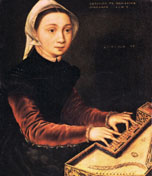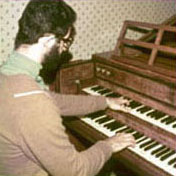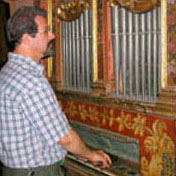Baroque Keyboard Fingering: A Method
Excerpts from the FOREWORD TO THE 7TH, 8TH and 9TH EDITIONS
We keep finding early modern proposers of historical fingerings. In 1972 Derek Adlam ...
Decades earlier ...what was possibly the earliest modern proposal for the use of historical fingerings on the harpsichord (Dolmetsch 1915) ...
Recently, at long last, we can see on the internet videos showing a few leading harpsichordists playing J.S. Bach with early fingerings.
The 7th edition of this eBook included two new rules and improved quality in many figures.
In the 8th edition the 17 author-handwritten examples (a remnant from the first editions) have been replaced by either facsimiles or print-quality score.
In the 9th edition a few further improvements and additions have been introduced, mostly marked with a vertical bar “|” on the left margin of the text.
Excerpts from the FOREWORD TO THE 6TH EDITION
If the attitude [in favour of old fingerings] of Ton Koopman ... was certainly pioneering back in 1977, let us mention a even earlier remark by a leading harpsichordist: “Now... we had the instruments, originals and copies, and then the whole question of fingering becomes vital” (Kenneth Gilbert 1974).
It is apparent from the sources that the basics of what would become the High Baroque technique, were already described in Renaissance times and reappeared in Early Baroque sources. Baroque fingering is fully adequate not only for the standard historical keyboards but also for enharmonic instruments with “split sharps”.
In the Internet we find nowadays both useful information and several misconceptions, such as the wrong belief that Baroque keyboard players used different fingering systems for harpsichords, virginals, clavichords and organs; or else that D. Scarlatti's Essercizi can only be played using the modern passings of the thumb. Modern thumb-passing technique is still prevalent today among concert harpsichordists, but things are improving: early keyboard fingerings are increasingly being adopted in the last few years, and are at present considered matter-of-fact in several important teaching institutions.
... To help the player to put into practice Baroque fingering—especially in intermediate and advanced pieces—an edition of fingered masterpieces is now available separately (Di Veroli, 2011): it includes an extensive introduction relating fingering technique to the interpretation of Baroque keyboard music.



